Next story: Continental Drift
Higgins on Afghanistan
by Geoff Kelly

Two months ago, when President Barack Obama unveiled his plan to commit 30,000 more US troops to Afghanistan, he also declared that he would start bringing troops home by the middle of 2011. Don’t count on that second part, says Congressman Brian Higgins, who made his second visit in 18 months to Afghanistan at the end of December. A successful counterinsurgency effort, says Higgins, necessarily entails nation building, and nation building requires time. “I guess if the president brings one soldier home in 18 months, he can call it a drawdown of troops,” Higgins said in a recent interview with Artvoice. “Setting a date by which we will begin drawing down forces was a political decision, and I understand why he made it. But it doesn’t mean we’re withdrawing from Afghanistan any time soon.”
We spoke at length with Higgins about his trip, which took him and six other members of Congress, Democrats and Republicans, to Kandahar and Kabul, where they met with Afghan President Hamid Karzai and General Stanley A. McChrystal, commander of US forces in Afghanistan. What follows are excerpts from that conversation.
• • • • •
AV: So how had Afghanistan changed in the 18 months since your previous visit there?
Higgins: What’s changed is a lot of focus has been taken off Iraq, as if that situation has resolved itself. It has not. Iraq still has a lot of problems, but the media seems to have focused now on Afghanistan, with the troop buildup and the growing chaos there. The last time I was in Afghanistan, Kabul was relatively calm. Now it’s volatile. You have a lot of IEDs going off in the capital city.
Unlike Iraq, which is an urban culture for the most part, in Afghanistan most of the population is dispersed throughout villages and remote areas outside of the major cities. Afghanistan is a nation of about 32 million people. It’s about 50 percent larger than Iraq in geography. It’s very poor. Lots of Islamic extremists. Many places you travel to it’s like the fourth century. There’s no running water, no electricity. People live in mud huts essentially. The life expectancy of a male is 43 years old.
So you live in Afghanistan: You’re poor, illiterate—probably about 80 percent of the population is illiterate—and at 21 half your life is over. So you become very susceptible to the recruiting strategies of Al Qaeda and the Taliban, who say that your current life is awful, and you die in a holy war and your afterlife will be idyllic. That’s pretty seductive for a young Afghan.
• • • • •
AV: Those recruitment strategies are abetted, too, by the fact that Afghans have watched their country overrun by foreign invaders for decades.
Higgins: For centuries. The British tried, the Soviets tried. The Afghan people have become accustomed to foreign invaders who come there and then leave, so they are very distrustful of any suggestion of foreign assistance.
Here’s the problem with Afghanistan: Afghanistan in a relatively small country of 32 million people. Directly next door is Pakistan—a large country with 175 million people. It has a lot of Islamic extremists and it has nuclear weapons. Verifiably there are probably 80 warheads. No one really knows where they are, no one really knows who has control of them. A major goal of Al Qaeda is to gain access to nuclear weapons. If Afghanistan falls, there is a likelihood that Pakistan would fall as well and Al Qaeda and the Taliban would have access to nuclear weapons.
That’s one of the major challenges, but I think it also creates a major opportunity to do a more robust diplomatic strategy to try to bring in India, try to bring in China, try to bring in other countries in that region who would be more vulnerable than the United States, really, to an Al Qaeda that has nuclear weapons or weapons of mass destruction.
• • • • •
AV: Under what conditions can a counterinsurgency strategy of the sort proposed by the Obama administration work?

Higgins: The American military strategy traditionally is kill and capture; it’s shock and awe; it’s overwhelming force. That has been the American military strategy dating back to the Civil War.
Halfway through the Iraq war, General David Petraeus wrote a counterinsurgency manual that basically says, “Let’s get out of these large forward operating bases that the American military is in for most of the day.” They used to come out and patrol the streets for two or three hours a day. Counterinsurgency requires you to immerse your troops within the population—not to kill and capture…the objective of counterinsurgency is to turn your enemy, or if you can’t turn your enemy, neutralize them. That requires getting involved with the population.
So it’s part military still, but a lot of it is humanitarian work too. The idea was that you could no longer use a rotational army in a relational society, that you had to find a way to deal more effectively with the population.
But that requires that you have a reliable partner. In Afghanistan, we don’t have a reliable partner. I met with President Karzai for about 90 minutes in the presidential palace in Kabul. I was very honest with him. I said, “President Karzai, how do I justify supporting as a member of Congress continuing military aid and development aid in the country that you run, which is most corrupt and impoverished country on the face of the earth?”
He dismissed any responsibility for the corruption, the dysfunction, in the Afghan government, although it’s existed there for eight years now, going on nine years. This is what he said: He said that all of the Western aid, military and development aid, flows through nongovernmental organizations, and thus there’s a lot of corruption. If it flowed through his government, there would be a line of accountability. He could eliminate corruption, his standing within the international community would be elevated, along with his standing with the Afghan people.
That’s not an acceptable answer. There’s a reason why Western aid doesn’t flow through his government—because it’s perceived as being pervasively corrupt. President Karzai is corrupt, and he doesn’t have a functioning government.
That’s what gives rise to the Taliban. Afghanistan is 34 provinces, and provincial governments become very important. If you’re an Afghan living in a village, who are you going to cut the deal with—the central government who you never see and you know is corrupt, or the Taliban, who is at least going to keep your family safe?
So what is the United States doing? The United States—good strategy theoretically—is trying to build up an Afghan police force and an Afghan army, so that one day they can take over and we can leave. But how do you do that in places like Kandahar province where 85 percent of the male population is illiterate? You’ve got to build schools, to give them the resources they need to become literate, and to be able to become police officers and army officers.
The point is, this is nation building. You have to build the institutions—schools, clinics, roads, bridges, water, electricity.
• • • • •
AV: Which, again, requires a reliable partner who can help you to get that aid money on the ground.
Higgins: That’s right. Part of the problem with American foreign policy is we go into these places too quickly, and we go into these places unilaterally. Despite the fact that we say it’s the “allied forces” that are fighting there, the United States commits 30,000 new troops to Afghanistan; Great Britain commits 500. So the Americans, both in Iraq and Afghanistan, are doing all the fighting and dying, and it’s costing us a lot of money. To date the wars in Iraq and Afghanistan have cost us about $984 billion—and that’s very, very conservative—including $12 million which the Americans used to put the Sunni insurgency in Iraq on the payroll. We basically bought them off. We can’t sustain that and create a functioning society.
So not only are we spending a lot of money there, we’re not making any progress. There’s very little positive, tangible evidence of progress over the last eight years, despite the fact that we’ve spent an enormous amount of money.
• • • • •
AV: How important is the opium trade to Afghanis and top the Taliban?
Higgins: After eight years, 60 percent of the Afghan economy is heroin. It’s opium. It’s poppy cultivation. The heroin trade finances the Taliban. There’s great book written by Gretchen Peters called The Seeds of Terror. In it, she estimates that the Taliban makes about a half a billion dollars a year on heroin. They don’t own the fields, but they preside over it, they tax it, they charge protection, and they finance their activities—[the money] buys the bombs that kill our people. The Taliban controls the heroin trade in Afghanistan, and Al Qaeda controls it outside of Afghanistan—it moves it into Pakistan, into Central Asia, into Iran, and other places.
Here’s the problem: You can’t just destroy 60 percent of the Afghan economy without replacing it with something. The replacement of the poppy fields with fruits and vegetables for example is very difficult. Opium doesn’t rot. Fruits and vegetables do. And it’s very lucrative.
The other problem: President Karzai’s brother is involved in the heroin trade.
• • • • •
AV: Fraud in August’s presidential election seems to have weakened Karzai without removing him from office.
Higgins: President Karzai, in preparation for elections, in trying to get support, brought in about 20 percent of the Afghan population who are Shia, and the Shia clerics, who practice a very repressive form of sharia law. They basically wrote into law the domestic partners law in Afghanistan to curry favor with these Shia clerics so Karzai could get their support. Very repressive toward women. It basically sanctions marital rape. It gives women no rights—no rights for education, no rights as individuals. This is the government that the United States is viewed to be an ally of in the Middle East. These are not American ideals. They are in direct conflict with American ideals. This is big problem.
• • • • •
AV: What did you make of the long, somewhat public deliberation of the president before he announced his new Afghan strategy? How does his current position differ from the views he expressed as a senator?
Higgins: Afghanistan was a convenient scapegoat for people who didn’t support the war in Iraq. In other words, we shouldn’t be in Iraq, a war of choice, we should be in Afghanistan, where the real terrorist threat exists. I think that was the common refrain from then Senator Obama and a lot of others, to be honest with you. But I think the more you get into this, the more obscure, the more nebulous, the endgame is. There is no endgame. What tamped down violence in Iraq? We put the Sunni insurgency on the payroll. We basically began paying people not to shoot a us—people who were shooting at us the month before. How long can you do that? I think sometimes civil war is necessary to establish lines of loyalty, of some kind of order.
• • • • •
AV: Do you believe that the president will start bringing troops home from Afghanistan in 2011?
Higgins: President Obama, in calling for a surge of 30,000 additional troops—which will bring us to about 100,000 American troops in Afghanistan—said we’re going to begin to draw down troops within 18 months. That’s what he said. I think what the American people heard is that we are going to begin to withdraw from Afghanistan within 18 months, and I can tell you flat-out that is not going to happen. This is nation building. Eighteen years maybe, more likely 20 or 30 years.
The problem is, as we spend almost a trillion dollars in Afghanistan and Iraq, let’s separate out what we finance in terms of construction—roads and bridges that are very often blown up after they’re constructed by the Taliban in Afghanistan and the Sunni insurgency in Iraq. We’ve spent about $38 billion in rebuilding Afghanistan, in construction. Roads, schools, bridges. We’ve spent about $58 billion in Iraq.
But we need to do nation building here in America…in order to stay at the forefront of the world economy—we have five percent of the world’s population, about 28 percent of the world’s economy; we’re still leaders in information technology, biotechnology, life sciences, etc.—but we have to invest. We have to be in a continuous improvement mode. When you look at cuts to cancer research over the past 10 years, the reason cited is that we have these obligations in Iraq and Afghanistan. There’s a reckoning here. We’re spending too much money. We’re already spending money we don’t have. I think a strong, prosperous America is the best defense in terms of national security. I think we have to get back to that.
• • • • •
AV: But our military is committed in Afghanistan and Iraq now, and so are the dollars to support them. How do we extricate our forces and our money from those wars? Counterinsurgency is supposed to create an environment conducive to a political solution, but in Afghanistan any kind of reconciliation seems unlikely.
Higgins: I think the getting there is very difficult, if not impossible.
The way you support American troops is you gave them a mission that can succeed. In Iraq, do you remember [President Bush] said he was going to do the surge in late 2006? The war wasn’t going well. He puts Petraeus in charge and they commit 20,000 more troops. The surge was supposed to give breathing room for the political parties—Shia, Sunni, and Kurd—to resolve their differences. The surge succeeded militarily by tamping down the violence, but all the existential issues, all the standout issues, are still unresolved—and will very likely be resolved violently. The sharing of oil revenues, the disputed areas in the north, Kirkuk, political reconciliation between the three major factions—they’re still not resolved.
So what is our role now? We’re talking about drawing down significantly in Iraq at the end of 2010, and drawing up in a place like Afghanistan, which is even more difficult. I think we have to find a way to draw down, but also to draw in those countries that would be threatened by Islamic extremists in control of Afghanistan and eventually perhaps Pakistan.
• • • • •
AV: The Afghanistan problem is really about Pakistan, isn’t it? Pakistanis worry that Obama’s surge will drive the fighting and the Taliban deeper into Pakistan. They worry about Karzai’s close ties to India, Pakistan’s mortal enemy.
Higgins: We have an Afghan-Pakistan problem. They are related. Do we have a reliable partner in Pakistan in our fight against the Taliban? Sometimes yes, sometimes no. That’s not good enough, considering all we’ve done in those two places, not to have reliable partners, but who continue to have their hands out. We’re giving them tens of millions of dollars that we don’t have, and yet they’re not helping to the extent that they should.
Effective diplomacy has to be bringing together India and Pakistan and saying, “You may hate each other, but you’re really going to hate Islamic extremists if they get control of Pakistan because you know where they’re coming next: India.”
• • • • •
AV: Will you and I be having this same conversation about Yemen in two years?
Higgins: I would hope not. Here’s what we’ve learned—that Al Qaeda is now a global network. As the global economy is now accessible due to the internet, so is global terrorism. You don’t have to be one place. It’s a movement that has representation throughout the world, including right here in the United States. So finding a way to impress upon the rest of the world that they are threatened by this and to commit resources to combatting it in an effective way is the goal.
• • • • •
View more of Brian Higgins' photos from Afghanistan:
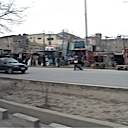 |
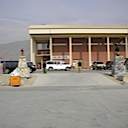 |
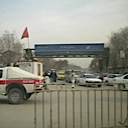 |
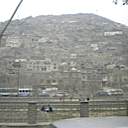 |
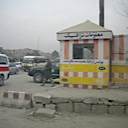 |
 |
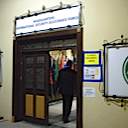 |
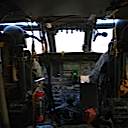 |
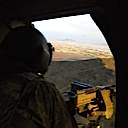 |
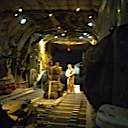 |
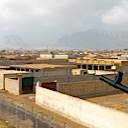 |
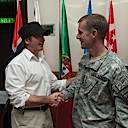 |
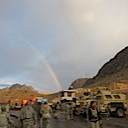 |
 |
 |
 |
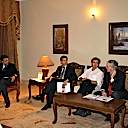 |
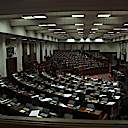 |
 |
 |
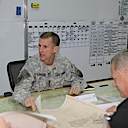 |
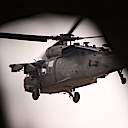 |
 |
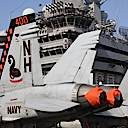 |
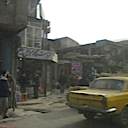 |
|
Issue Navigation> Issue Index > v9n7 (Week of Thursday, February 18) > Higgins on Afghanistan This Week's Issue • Artvoice Daily • Artvoice TV • Events Calendar • Classifieds |









 Current Issue
Current Issue